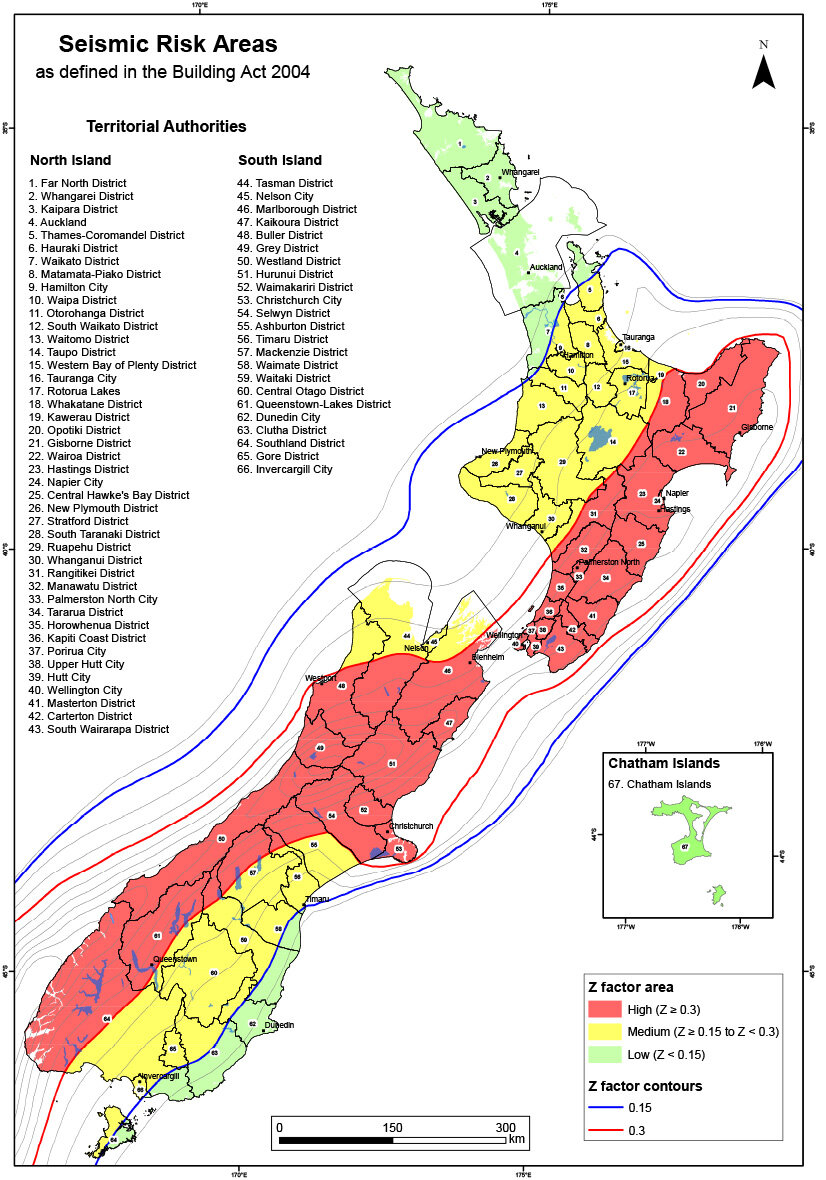Tino Seismic will provide a property owner with a comprehensive earthquake assessment, detailed IEP report and an accurate %NBS rating.
WHAT IS AN ISA ASSESSMENT?
An ISA (Initial Seismic Assessment) is carried out using the Initial Evaluation Procedure (IEP). It compares existing building’s % of structural earthquake strength relative to the New Building Standard (%NBS). The IEP was originally designed by the New Zealand Society for Earthquake Engineering (NZSEE). Territorial Authorities carry out an IEP as an initial seismic assessment of a building. Its purpose is to determine if a building is potentially earthquake-prone. If your building is potentially earthquake-prone, you may be advised to conduct your own engineering assessment. However, it is important to note that the IEP is engineering guesswork with no science behind it. It is essentially a visual inspection or a drawing review and many engineers make inaccurate seismic assessments.
WHAT IS EARTHQUAKE PRONE?
A building is earthquake-prone if it has a seismic capacity of less than 34 %NBS (%New Building Standard). It implies a building will suffer a high level of damage in a moderate earthquake. Earthquake-prone buildings are likely to collapse, causing injury or death, or damage to other property. However, the %NBS rating should not be enough. As a building owner need to know more: you need to understand how your building will behave in an earthquake – which is where you need Tino Seismic’s expertise.
A Building that is:
Earthquake-Prone – %NBS rating less than 34%
Earthquake prone implies high level of building damage is expected as a result of a moderate earthquake. If you own an earthquake-prone building, you are required under the Building Act to carry out seismic strengthening work on the building so that it is no longer earthquake-prone. The required timeframe for carrying out such work depends upon the location of your building on a seismic risk map shown below.
New Zealand seismic risk map (source: MBIE)
There are priority and non-priority buildings. The timeframes for actions on non-priority buildings are as follows:
15 years in high seismic risk area.
25 years in medium seismic risk area.
35 years in low seismic risk area.
For example, in Wellington, owners have 15 years to strengthen non-priority buildings from the time when they receive the EPB notice from the council. Priority buildings need to be remediated within half of the time available for non-priority buildings in high and medium seismic risk areas. There are two types of priority buildings:
Those that are prescribed in the Building Act, which include certain hospital, emergency and education buildings.
Those that are described in the Building Act and determined with community input, which include parts of unreinforced masonry buildings that could fall in an earthquake onto a thoroughfare with sufficient pedestrian or vehicle traffic to warrant prioritisation, and buildings that could impede transport routes of strategic importance if they were to collapse in an earthquake. Councils will need to undertake public consultation to decide with their communities which routes or thoroughfares this should apply to.
Any other buildings not included above are non-priority buildings.
An Earthquake Risk – %NBS rating 34% - 66%
Councils won’t insist such a building needs to be upgraded. However, such buildings are listed as “potentially an earthquake risk”, which means damage can be high to minor, depending how close to the 34 %NBS rating the building is
Unlikely to be an Earthquake Risk – %NBS rating at least 67%
A building with a rating of at least 67% NBS is not classified as an earthquake risk. However, strengthening its structural components can be investigated to achieve a higher rating.
Seismic Assessment outcomes of risk per % can be seen in the table below.
The approximate relative risks given are the risk to occupants or to neighbouring buildings relative to a building that just meets the minimum performance standard indicated by clause B1 of the New Zealand Building Code.
The risk descriptions given can be considered to be relative life safety risks if a large earthquake occurs.


